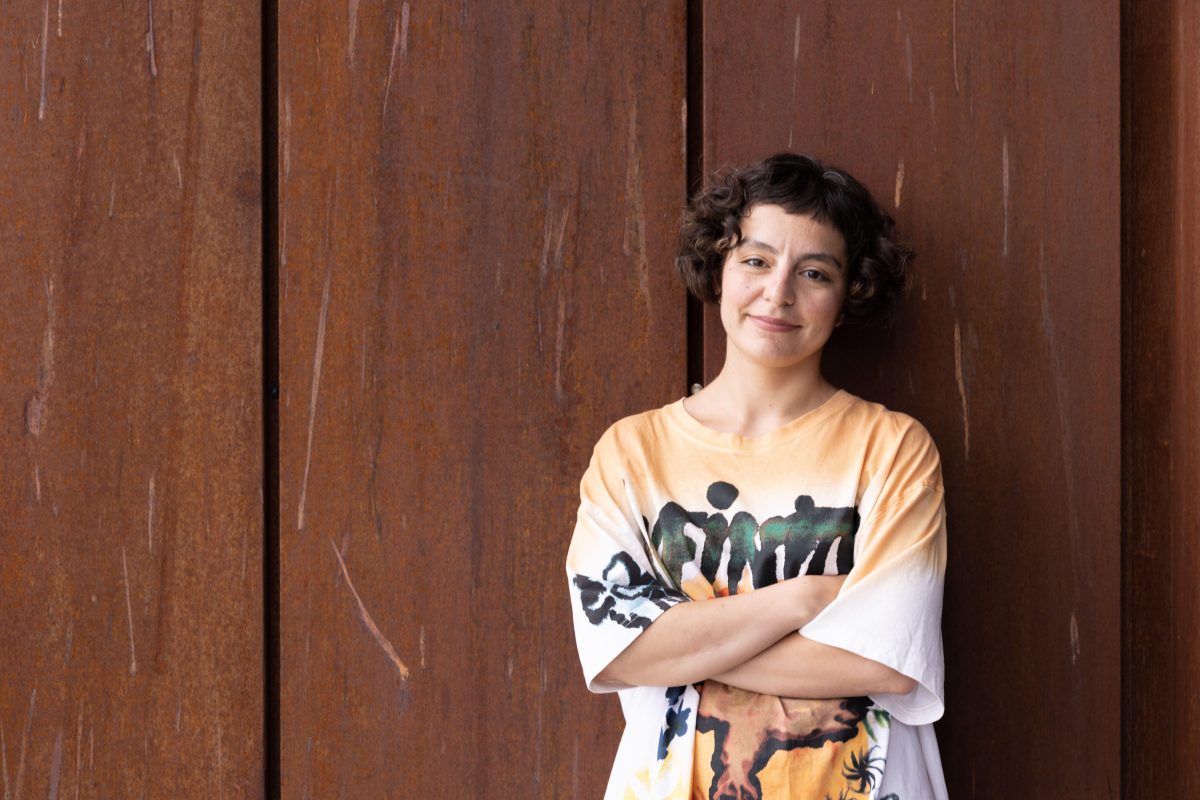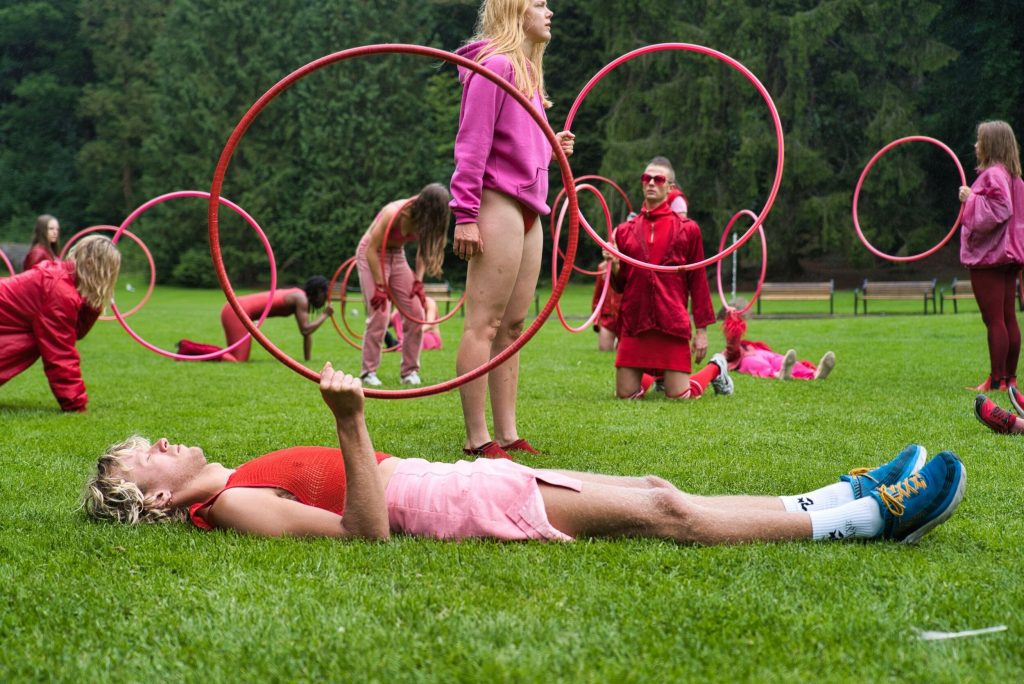Oslo incidents: HOOP
July 19, 2022

Roza Moshtaghi, 2022. Photo by Sakib Saboor
"After a long period of shutdown, we simply needed to make something," says choreographer Roza Moshtaghi, who together with De Naive brings us HOOP.
Oslohendelser is a series of performative events in Oslo and a collaborative project between TrAP and Kloden. Each year, different artists curate the program and in 2021, dancer and choreographer Mia Habib and dance and sound artist Jassem Hindi programmed five of these events. The sixth, HOOP, takes place on August 19 and 20 this year.
Multiple perspectives
HOOP is a collaboration between choreographer Roza Moshtaghi and the artist group De Naive, consisting of Charlott Utzig, Julie Moviken and Harald Beharie. The project focuses on people and places in public spaces, and rock rings are an important part of the performance, both as a visual tool and as a shared activity between the performers.
We caught up with Roza, who says the project grew out of a strong desire to create.
- After a long period of shutdown, we simply needed to create something and communicate with people.
The performers include people ranging from beginners to professionals. Each time HOOP visits a new location, the project is designed with local groups and performers. In other words, a social project is created where community and group are strong. This year there has been an open call to get more young people to participate.
- Being able to work with different target groups makes the project more and more complex. "It's very interesting and valuable for us to be able to work with young people and include multiple perspectives. It gives the project more legs to stand on.
Borrowing the city
In August, you will be able to see several dancers dressed in pink and red and each with their own rock ring in the Ulven/Økern area, but the choreographer will not reveal exactly where, as the pop-up element is an important part of the project.
- Why are you doing this? What do you want to achieve?
- Both De Naive and I are very interested in public space. We are also conscious of who we are making things for, and choose places that we believe have meaning. We like to say that we borrow places in the city from the people, we understand that the place doesn't necessarily belong to us. It's not about art having the right to take over, but more about sharing and borrowing the place from each other and, not least, borrowing attention.
Roza adds that it's also about reaching different types of audiences.
- Not necessarily to show the audience something, but so that we can all experience something different for ourselves. And for us to be able to develop our practice further.

Rainbow on the way to work
When HOOP dances, they create a performative togetherness where repetitive movements emerge and then dissolve. But what's the deal with the rock rings?
De Naive and Roza Moshtaghi take inspiration from Native American Hoop Dance, a narrative dance that uses rock rings as props.
- It's not that we're so good at rock, it's not about that. It's an aesthetic object and a common tool for the group. What we do is that we move around the city, and move to different places.
- Why can't we know exactly where and when you'll be, so that those of us who really want to see you can actually make it?
- The concept is designed to be experienced on the way to something. "We think it's interesting that it becomes part of everyday life, rather than being a 'let's do something cultural'. When it becomes something people experience on their way home from work, or something children experience with their kindergarten group on their way somewhere, it becomes part of life in the city. A bit like a rainbow that suddenly appears, where people think "oh yeah, I saw that on my way to work".
This story was first published on trap.no.